Should Math Students Be at the Board Working?
A MiddleWeb Blog
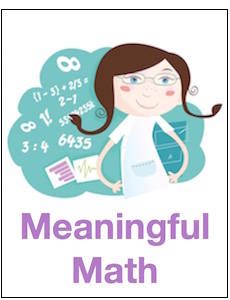
Later I asked what they were doing and she said, “I have them at the board working problems.” I remember very clearly thinking that I would not be comfortable with that.
When I began teaching 11 years ago, I was very conscious of classroom management. I wanted to be the one talking, and I wanted the students listening and taking notes. I really couldn’t fathom anything different. I thought, if I let them go to the board what if they don’t work? What if they (gasp!) talk about other things? I was afraid my principal would walk in and think I had lost control or that I wasn’t working hard enough myself.
Doing, not watching
I have come to understand how necessary it is for students to be doing the math, and not watching me do the math. I’ve also learned that students need to process what they are learning, and one way they can do that is by talking about it with their peers. I have found one of the best ways to accomplish these things is by having students work problems at the board.
So now it is very common to see my students working problems at the board, sometimes for the entire period. It’s actually a pretty low prep activity, I either post the problems around the room and the students rotate, or I give the students several problems on one piece of paper and they stay in one spot.
I have come to believe that having students working at the board is a good teaching practice. However, I am interested in exploring the advantages and disadvantages, and working to make a good teaching practice even better.
Advantages
I think simply allowing students the ability to be up and moving around is an advantage. I recently overheard one of my students say, “I like this class because this is the last time I will be able to be out of my seat for the rest of the day.”
Research seems to indicate that sitting for long periods of time does not maximize learning, and in fact, sitting for long periods of time can be unhealthy. (See articles here and here.) I can personally attest to how uncomfortable I feel after sitting for hours during professional development. After several hours I find it hard to continue to concentrate, even when I am really interested and enjoying the content.
Standing at the board encourages students to be working and thinking. Not only are they more prone to be engaged, for some reason they also display less of the helplessness they sometimes show when they’re sitting alone at their desks.
I think it encourages students to try things even if they are not completely sure how to work a problem – because if it’s not right or doesn’t work, it’s extremely easy to start over. Work done on a whiteboard can be easily erased. I have seen students make a math error, giggle a little, then very quickly wipe away their work and try something else.
Things I worry about
I have the fear that one student will be doing all the work, and the other student(s) are just bystanders. Of course, I worry about this anytime my students engage in a group activity.
I have tried different strategies to combat this. If students are rotating around the classroom, I have them take turns writing on the board. I also like to have each pair of students use different colored markers, and in that way I can see who is writing what.

I also worry that my classroom will become too chaotic, making it difficult for some students to learn. (In fact, one student did say that it was easier for them to learn when everyone was in their seats.) I do not have huge classes, but I do usually have at least one class with 26 or 27 students. When you have that many students up working and talking, it can get loud and I worry that it will negatively impact students who can’t filter out that amount of noise.
What the students say
I like to ask my students for their input. As the participants they have a unique insight. So I asked my students to fill out an anonymous survey dealing with working problems on the whiteboard. I wanted to know how effective they thought it was, and what they perceived the disadvantages to be.
► To begin with, I asked my students to rank their learning experience when working at the whiteboard from 1 to 5 (with 5 being greatest). Eighty-two percent of my students ranked their learning at a 4 or 5 when working at the board.
► When asked about participation, about 88% said that everyone or almost everyone in each group participated. About 12% said that one person usually does all the work. 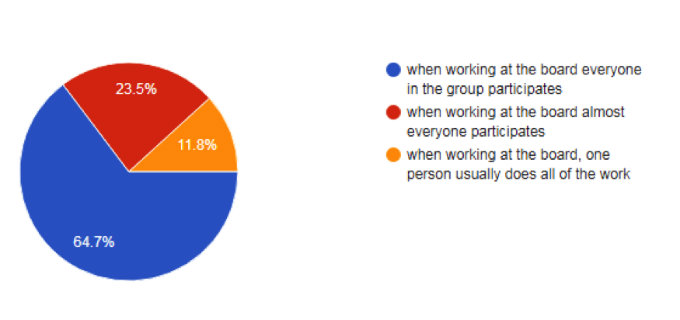
► Over 75% of my students felt that board work was a good way to prepare for a test. One student said that working at the board “helps me see how to work out the problems and what mistakes I’ve made.”
► Students commented that they enjoyed working with and learning from other students. On the other hand, one student said working at the board “makes me nervous.”
How to get better?
I plan to continue having my students up and working at the whiteboards as often as possible. The research seems to support the practice and the majority of students enjoy it. However, there are areas in which I need to improve. I’ve listed some of them below.
- Be more organized. Number the sections of the whiteboards so the students know where to go. Make sure each section is stocked with a marker and eraser.
- Continue to create a classroom culture which encourages students to participate and not be bystanders.
- I need better problems! I need to be pickier about what problems I have my students work. I need problems that invite discussion and require thinking.
Encourage student discourse, but avoid letting the noise reach a level that could hinder other students’ learning. There’s an app for that! I downloaded Sound Meter for my Android phone, but there are many others to choose from depending on what device you have. Find out more in this post by Richard Byrne at Free Technology for Teachers.
More Research: VNPS
I don’t know how I missed it, but I’ve only recently become aware of VNPS (vertical non permanent surfaces), a strategy that promotes having students visibly working at whiteboards to complete mathematically rich tasks. It is often mentioned in tandem with randomly grouping students.
If you are interested I have attached some links which discuss VNPS. I found the articles that dealt with the practical aspects of having your whole class working at the board to be especially helpful; such as, how to get that much whiteboard space in your room and how to provide markers and erasers for the students.
Type-A MathLand: My favorite vertical non permanent surfaces (#VNPS) aka – Whiteboards!
Peter Liljedahl: Building thinking classrooms: Conditions for problem solving
Wheeler’s thoughts on teaching: Visibly random groups & Vertical non-permanent surfaces
Mark n’ Math: VNPS- Vertical Non Permanent Surfaces

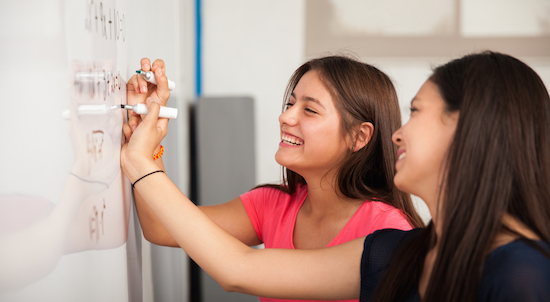
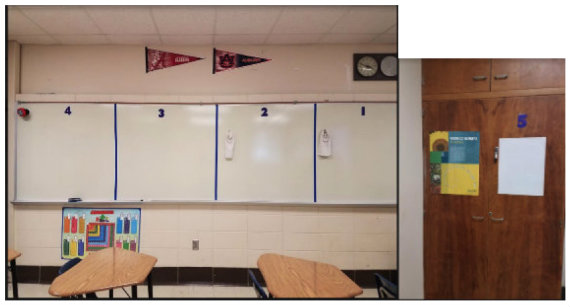
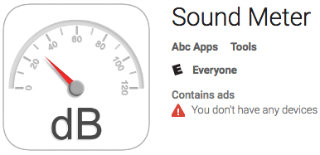






























Thanks for linking to my post on the topic. It’s always great to read about how other teachers incorporate vertical surfaces into their classrooms for student work!
Laura, you’re welcome! Your article helped me a lot! In particular, I liked your “switch the chalk” suggestion. Also, not allowing one student to write anything without input from their partner. Great suggestions!
As a teacher of students with learning disabilities, going to the board worked well. The student not only put the problem on the board but then explained it to the class. As we know, teaching is learning twice. If the student made an error, the student who found it made extra points on his/her paper. And to get maximum participation, have the problems range in difficulty allowing all students the opportunity to go to the board.
Thank you for your comment! I think providing problems with varying degrees of difficulty is a great idea, it gives more students the opportunity to participate.
…and when they’re participating, they’re not disrupting the class! Win Win!!! :-)